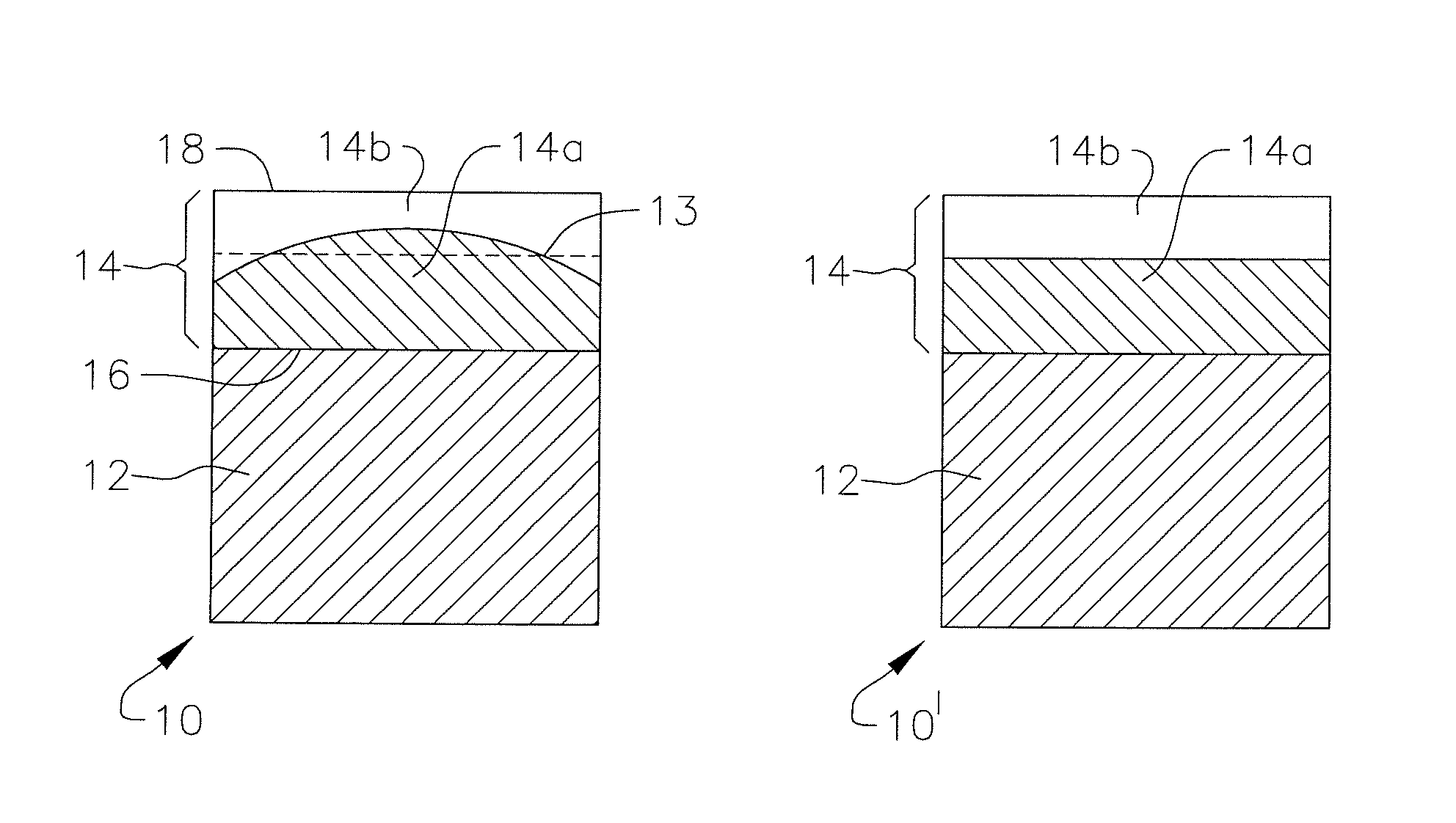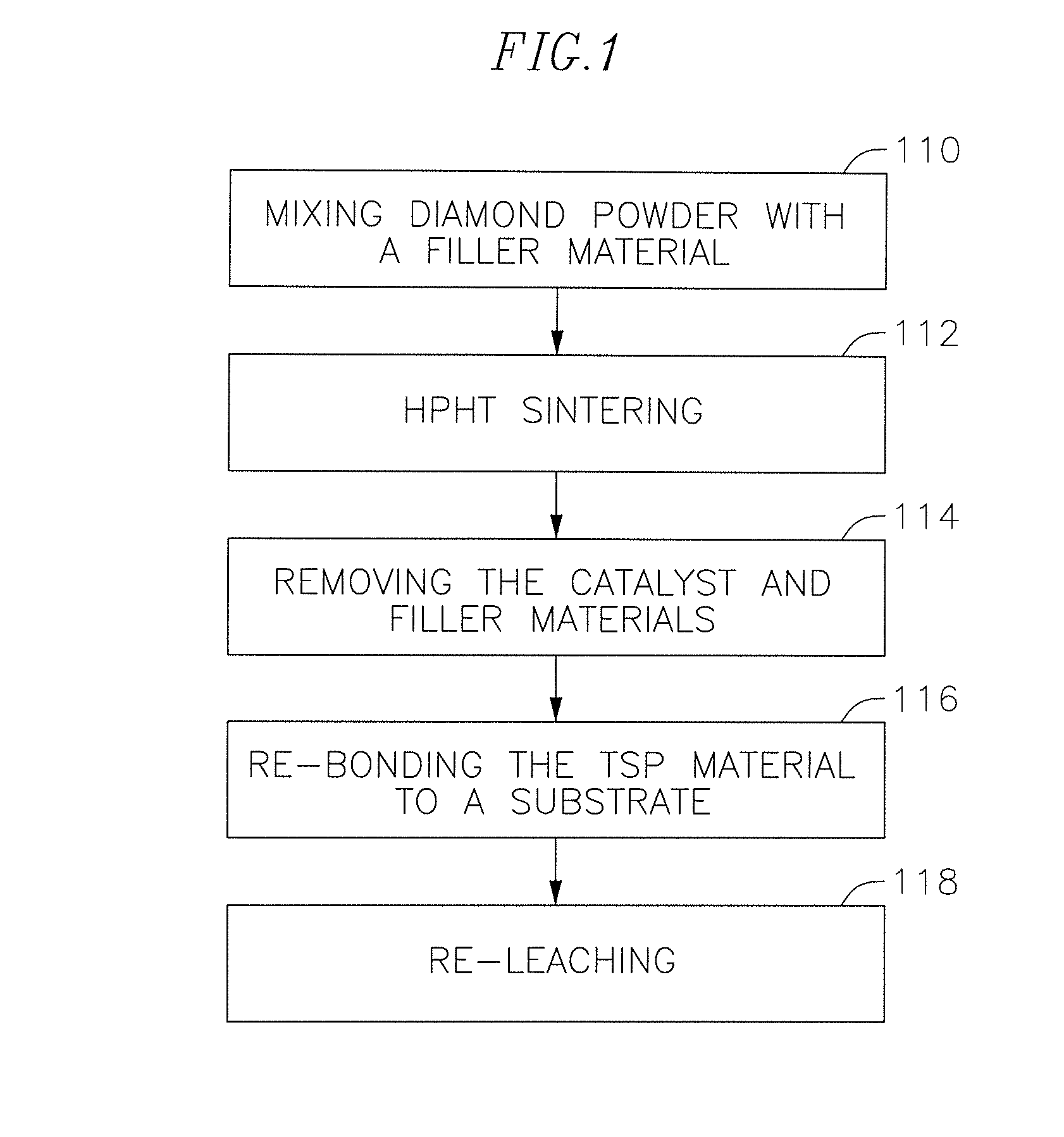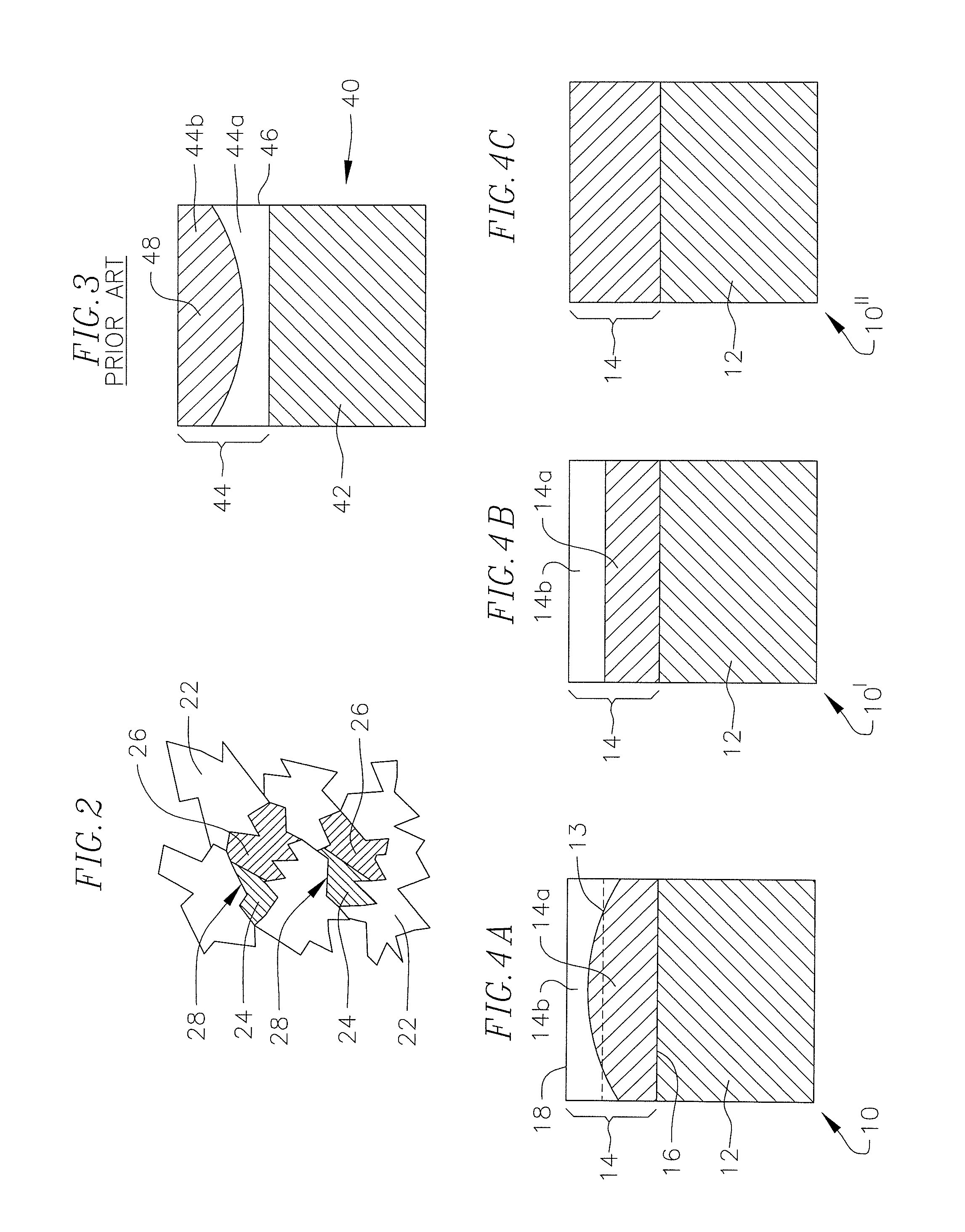Polycrystalline diamond cutting elements with engineered porosity and method for manufacturing such cutting elements
a technology of diamond cutting elements and engineered porosity, which is applied in the direction of manufacturing tools, grinding devices, metal working devices, etc., can solve the problems of limiting the service life of the cutting element, residual porosity in the re-bonded tsp layer, and infiltration of thermal stresses into the pcd material, etc., to facilitate infiltration of infiltrant material, enhance the porosity of the tsp material, and the effect of increasing the porosity
- Summary
- Abstract
- Description
- Claims
- Application Information
AI Technical Summary
Benefits of technology
Problems solved by technology
Method used
Image
Examples
Embodiment Construction
[0020]In an exemplary embodiment, there is provided a method for facilitating infiltration of an infiltrant material into a TSP material during re-bonding of the TSP material to a substrate, by enhancing the porosity of the TSP material near the interface with the substrate. In one embodiment, the method includes mixing a filler material or additive (collectively or individually referred to herein as “filler material”) with a diamond powder mixture prior to HPHT sintering, and then HPHT sintering the diamond powder and filler material mixture to form polycrystalline diamond (PCD). The filler material occupies space in the sintered PCD layer, residing between the bonded diamond crystals. After HPHT sintering, this filler material is removed, such as by leaching, to form a thermally stable product (TSP) with pores between the bonded diamond crystals. The amount and distribution of filler material in the diamond powder is controlled to provide a greater porosity in at least a portion o...
PUM
| Property | Measurement | Unit |
|---|---|---|
| porosities | aaaaa | aaaaa |
| differential porosity | aaaaa | aaaaa |
| differential porosity | aaaaa | aaaaa |
Abstract
Description
Claims
Application Information
 Login to View More
Login to View More - R&D
- Intellectual Property
- Life Sciences
- Materials
- Tech Scout
- Unparalleled Data Quality
- Higher Quality Content
- 60% Fewer Hallucinations
Browse by: Latest US Patents, China's latest patents, Technical Efficacy Thesaurus, Application Domain, Technology Topic, Popular Technical Reports.
© 2025 PatSnap. All rights reserved.Legal|Privacy policy|Modern Slavery Act Transparency Statement|Sitemap|About US| Contact US: help@patsnap.com



